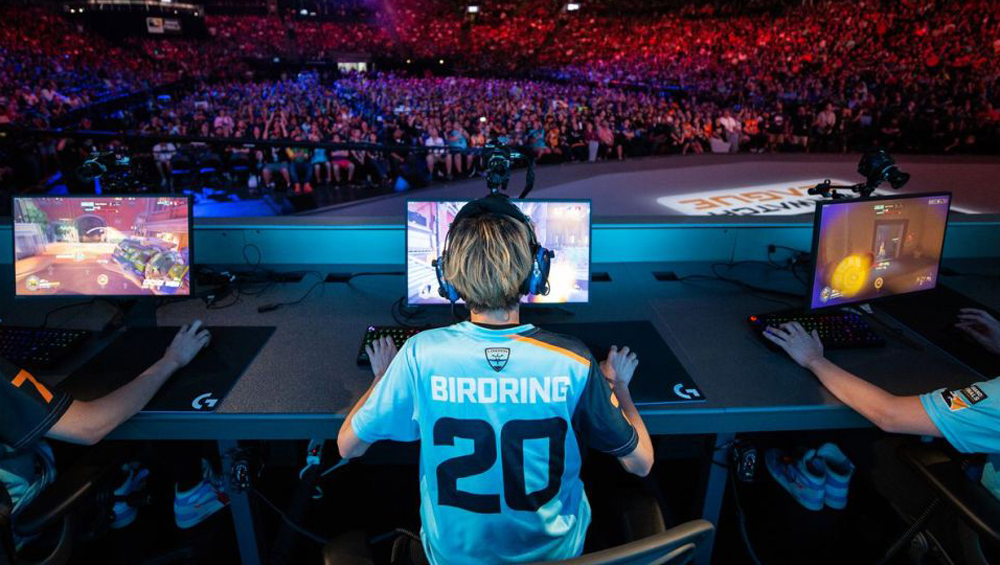
Esports: Exponential Rev, Uncharted Territory


Mary Collins
The other day, I had the chance to catch up with a friend from my days in cable television. He’d lived in Europe for several years and had been working in telephony. Recently returned home, he’s considering what to do in the next chapter of his life. You should have seen the look on his face when I suggested video games, and in particular esports. His response was, “I’ve played Candy Crush and I still like Wii, but is that really a growth business?” He was shocked when I replied that the 2020 global video game revenue was forecast at four times global box office revenue and about three times the music industry forecast.
I have to admit that I’m still learning about the world of esports. Helpfully, Kimberly M. Randolph and Colin M. O’Brien, managing director and analyst, respectively, for the financial advisory firm Stout, prepared an article called “A World Apart” for the May/June issue of MFM’s member publication, The Financial Manager. It’s the fifth in our media valuations special report. In it, Randolph and O’Brien lay out the emergence of, massive revenue streams from, and risks associated with the esports business.
For those who aren’t esports participants or fans, perhaps a definition is in order. Esports is a form of competition using video games. It typically takes the form of organized, multiplayer video game competitions between professional players, individually or as teams. Although organized competitions have long been a part of video game culture, they were largely held between amateurs until the late 2000s. That’s when participation by professional gamers and spectatorship in these events through live streaming saw a large surge in popularity. Currently, companies including Beasley Broadcast Group and Comcast have esports teams.
Randolph and O’Brien’s article delves more deeply into esports revenue models, laying out four specific streams, including how each works and makes money. As someone who’s more of an observer than a participant, I find the whole world of esports and esports business models fascinating.
The article begins with some impressive numbers. It describes a teenager named Kyle Giersdorf (known as Bugha to esports fans) who won the Fortnight World Cup, a worldwide tournament for Fortnight, a video game that launched in 2017 and at one point attracted 80 million players globally. In 2019, the 16-year-old Bugha took home $3 million as the grand prize. By comparison, the winner of the 2018 Masters — one of the four major PGA tournaments, which has been played since 1934 — received slightly less than $2 million.
Unlike traditional sports, video gaming opens the doors for some unique ways to make money. The first is developer-backed leagues. What sets this category apart, say Randolph and O’Brien, is that the individuals or companies that create video games also own the intellectual property associated with the games. These leagues offer revenue-sharing agreements with teams and also attract sponsors that advertise during tournaments or other events.
The authors cite Riot Games as a developer with a promising revenue stream. Riot Games reported that its 2018 League of Legends World Championship Finals attracted almost 100 million viewers — a larger audience than that of the Super Bowl of the same year, according to data from Nielsen. Sponsors aren’t just random companies, either: brands including Verizon, MasterCard and even Louis Vuitton are working with esports leagues; some teams have also signed with their own top-tier sponsors, such as BMW and PepsiCo.
The second category of revenue, according to Randolph and O’Brien, is investing and franchises. A number of investors have realized there is serious money to be made in investing in or purchasing an esports league. Somewhat akin to major league sports, esports organizations maintain a pool of gamers who are signed to play in their leagues. But in esports, investors can purchase a franchise spot that allows them to bring in a team of players drawn from the gamer pool — some of whom have expertise in one game and others who may play a range of video games.
This franchise model has responded well to the increase in demand, to say the least. The article describes a single franchise spot, first acquired for $10 million by competitive esports group Echo Fox, acquired two years later for $33 million by a rival group called Evil Geniuses, and subsequently acquired again the same year for an undisclosed amount. An esports team named TeamSoloMid (TSM) currently holds the highest position in Forbes’ annual esports list, valued at $410 million in 2020, with a revenue multiple of a 9.1x; other esports teams have lower valuations but higher revenue multiples.
The third esports revenue category is the players themselves. Right now, gamers can operate in two different ways — either as competitive players or as “streamers”— and some do both. Competitive players are typically signed to an esports group such as TSM, which places them onto rosters and teams for either a single game or across multiple games, depending on the player. These players split earnings with their parent organization.
Streamers are most often gamers who have played competitively over the years, but who want to transition to a model in which they play while streaming each game, sometimes competing against novices, and commentating on their own gameplay. Their notoriety attracts both competitors who want to learn from them, and viewers who simply enjoy watching an expert in action. TSM has several streamers within its group, who they use to promote their organization and earn revenue from YouTube and other social media.
Speaking of streaming, the platforms that bring esports content to viewers take one of the largest slices of the esports revenue pie. Randolph and O’Brien say Twitch is currently the dominant player in the North American market, thanks in part to its purchase by Amazon in 2014 for $1 billion. According to Needham & Co., Twitch is currently valued at $15 billion, and its viewership has grown from 55 million monthly viewers at the time of Amazon’s purchase to 140 million monthly viewers now. In addition to selling tickets to gaming tournaments and other events, Twitch created its own in-house currency, “bits,” which fans can purchase to “cheer” individual gamers.
Randolph and O’Brien close their article with a look toward the future of esports. While they state it’s chiefly full of promise, citing statistics such as Insider Intelligence’s estimate that viewership will grow from $454 million in 2019 to $646 million in 2023, and that esports investment increased to $4.5 billion in 2018 from just $890 million in 2017, esports is not without risks. As they point out, “most esports leagues are still bleeding red ink.”
Moreover, it’s not looking good for many of them to become profitable over the next few years, meaning numerous leagues may not make it and only a few will rise to dominance. They also say the relatively short lifespan of most video games can be problematic for the industry. Nonetheless, investors’ appetite for esports is growing, and there’s every reason to believe that esports will continue to look more and more like traditional sports, drawing ever-larger viewership, more sponsors, greater investment, and higher revenues.
If, like me, you are fascinated by this booming segment of the media industry, you’ll want to read Randolph and O’Brien’s article in its entirety. The digital version of the May/June 2021 issue of TFM is currently available on the MFM website.
In addition, we still have video games-specific sessions scheduled as part of Media Finance Focus 2021, which runs through July 29. Among these are a session about valuation on June 24 and a panel discussing new revenue streams on July 8. The complete conference agenda is available on our conference website.
Mary M. Collins is president and CEO of the Media Financial Management Association and its BCCA subsidiary, the media industry’s credit association. She can be reached at [email protected] and via the association’s LinkedIn, Facebook, Instagram and Twitter accounts.
































Comments (0)